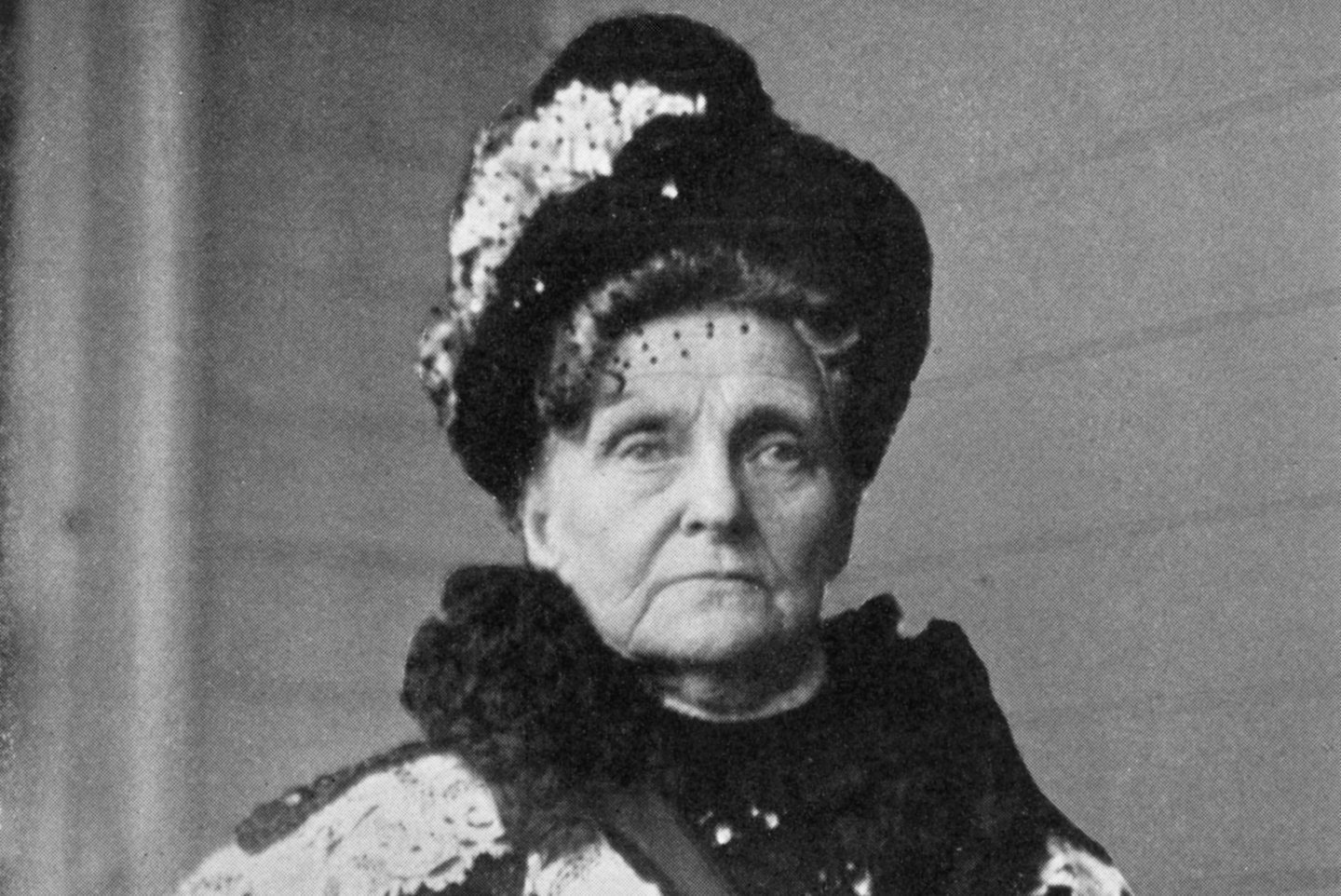
Who was Hetty Green? Hetty Green, often called the "Witch of Wall Street," was one of the most fascinating figures in American finance. Born in 1834, she became the richest woman in America through shrewd investments and frugality. Why is she important? Her story is a mix of brilliance and eccentricity, making her a legend in financial circles. What made her unique? Unlike many of her contemporaries, Hetty managed her own investments, amassing a fortune equivalent to billions today. Her life offers lessons in determination, financial acumen, and the power of living below one's means. Ready to learn more? Dive into these 38 intriguing facts about Hetty Green and discover what made her a financial powerhouse.
Key Takeaways:
- Hetty Green, known as the "Witch of Wall Street," was a frugal and shrewd financier who broke gender barriers in finance and left a legacy of financial success and philanthropy.
- Despite her eccentricities, Hetty Green's financial philosophy of living below her means, avoiding speculative investments, and emphasizing liquidity continues to inspire and influence the world of finance today.
Who Was Hetty Green?
Hetty Green, often called the "Witch of Wall Street," was one of the most successful and controversial financiers of her time. Known for her frugality and shrewd investments, she amassed a fortune during an era when women rarely participated in finance.
-
Hetty Green was born Henrietta Howland Robinson on November 21, 1834, in New Bedford, Massachusetts.
-
She inherited $7.5 million from her father and aunt, which she used as a foundation for her investments.
-
Hetty was known for her extreme frugality, often wearing the same black dress and undergarments until they wore out.
-
Despite her wealth, she lived in cheap boarding houses to save money.
Hetty Green's Investment Strategies
Hetty's investment strategies were ahead of her time. She focused on undervalued assets and was a master of buying low and selling high.
-
She invested heavily in real estate, bonds, and railroads, which were booming industries in the 19th century.
-
Hetty often bought properties during economic downturns when prices were low.
-
She was one of the first women to trade on Wall Street, breaking gender barriers in finance.
-
Hetty preferred to keep her money in cash, which allowed her to take advantage of investment opportunities quickly.
Hetty Green's Personal Life
Despite her financial acumen, Hetty's personal life was filled with eccentricities and controversies.
-
She married Edward Henry Green in 1867, who was also a successful businessman.
-
The couple had two children, Ned and Sylvia, whom Hetty raised with the same frugality she practiced.
-
Hetty once refused to pay for medical treatment for her son’s leg injury, leading to its amputation.
-
She was known to carry her important documents in a bag strapped to her body at all times.
Hetty Green's Legacy
Hetty Green left an indelible mark on the world of finance and continues to be a subject of fascination.
-
At the time of her death in 1916, her estate was estimated to be worth over $100 million.
-
She was posthumously inducted into the National Women's Hall of Fame in 2010.
-
Hetty's life inspired the character of Ebenezer Scrooge in Charles Dickens' "A Christmas Carol."
-
Her investment strategies are still studied by financial experts today.
Controversies and Legal Battles
Hetty Green was no stranger to legal battles and controversies, often finding herself at odds with others.
-
She was involved in numerous lawsuits, often representing herself in court.
-
Hetty once sued the city of New York over property taxes, a case that she won.
-
She was accused of forgery in 1868 but was acquitted due to lack of evidence.
-
Hetty's frugality led to rumors that she ate only oatmeal heated on her office radiator.
Hetty Green's Philanthropy
Despite her reputation for stinginess, Hetty did engage in philanthropic activities, though they were often overshadowed by her frugality.
-
She donated to various causes, including the Civil War effort and local charities.
-
Hetty provided financial support to her relatives, although she often demanded repayment with interest.
-
She funded the construction of a hospital in Bellows Falls, Vermont.
-
Hetty also contributed to the maintenance of her hometown's public library.
Hetty Green's Influence on Women in Finance
Hetty Green's success paved the way for future generations of women in finance, showing that gender should not be a barrier to financial success.
-
She was one of the first women to be taken seriously in the male-dominated world of finance.
-
Hetty's success inspired other women to pursue careers in finance and investment.
-
She proved that women could be just as shrewd and successful as men in managing money.
-
Hetty's life story has been the subject of numerous books and articles, highlighting her impact on the financial world.
Hetty Green's Financial Philosophy
Hetty Green's financial philosophy was simple yet effective, focusing on long-term gains and prudent management.
-
She believed in living below her means, a principle she practiced throughout her life.
-
Hetty avoided speculative investments, preferring stable, income-generating assets.
-
She emphasized the importance of liquidity, keeping a significant portion of her wealth in cash.
-
Hetty's cautious approach helped her survive financial panics and economic downturns.
Hetty Green's Death and Aftermath
Hetty Green's death marked the end of an era, but her legacy lived on through her children and the financial principles she championed.
-
She died on July 3, 1916, at the age of 81, in New York City.
-
Her son, Ned Green, inherited the bulk of her fortune and continued her investment practices.
-
Hetty's daughter, Sylvia, also inherited a significant portion of the estate and became a philanthropist.
-
The family fortune was eventually divided among various heirs and charitable causes.
Interesting Anecdotes About Hetty Green
Hetty Green's life was filled with interesting anecdotes that highlight her unique personality and financial acumen.
-
She once disguised herself as a maid to avoid paying a hospital bill.
-
Hetty reportedly used to eat pies that cost only 15 cents each, despite her immense wealth.
Hetty Green's Legacy
Hetty Green, known as the "Witch of Wall Street," left a lasting mark on American finance. Her frugality and shrewd investments made her one of the wealthiest women of her time. Despite her wealth, Green lived modestly, often wearing the same black dress and avoiding unnecessary expenses. Her financial acumen was unmatched, allowing her to amass a fortune during a period when women rarely held such power.
Green's story isn't just about money. It's about breaking barriers and challenging societal norms. She proved that determination and intelligence could overcome the gender biases of her era. Her legacy continues to inspire those who dare to defy expectations and carve their own path. Hetty Green's life serves as a reminder that true success isn't just about wealth—it's about resilience, ingenuity, and the courage to be different.
Frequently Asked Questions
Was this page helpful?
Our commitment to delivering trustworthy and engaging content is at the heart of what we do. Each fact on our site is contributed by real users like you, bringing a wealth of diverse insights and information. To ensure the highest standards of accuracy and reliability, our dedicated editors meticulously review each submission. This process guarantees that the facts we share are not only fascinating but also credible. Trust in our commitment to quality and authenticity as you explore and learn with us.


